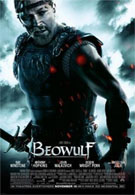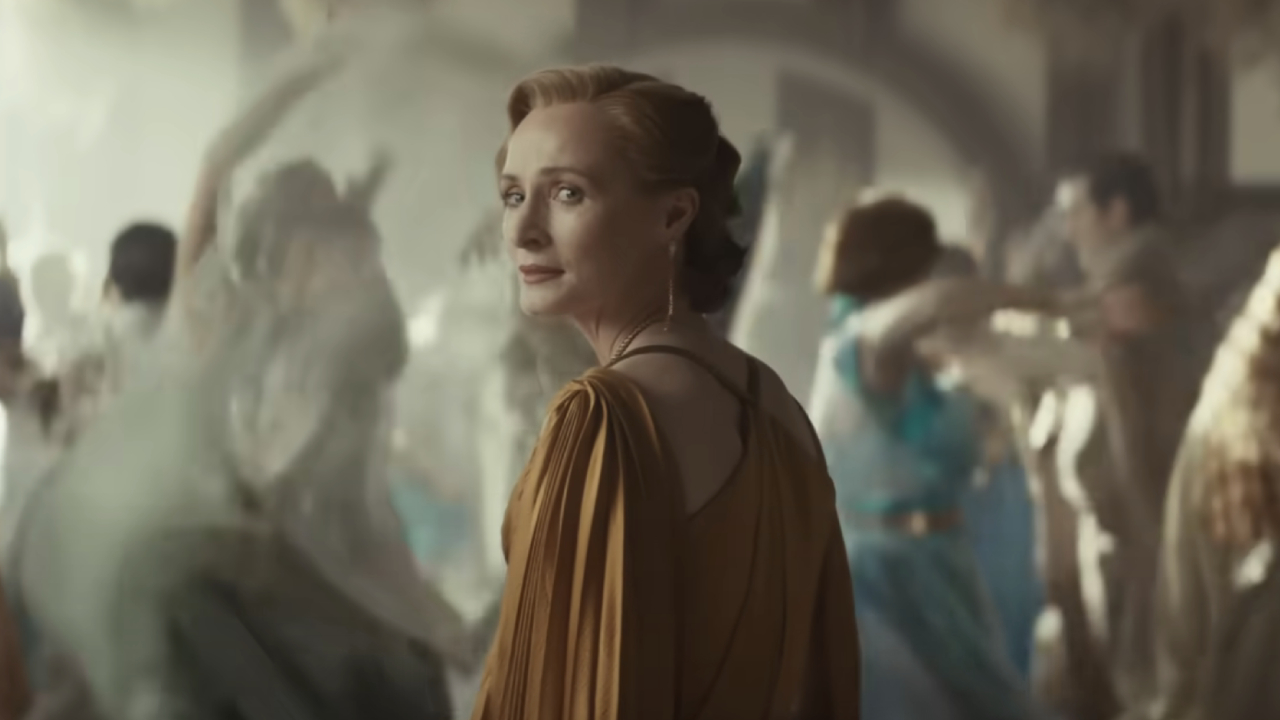Robert Zemeckis’ latest foray into his world of actor-based computer animation movies does for the classic tale of Beowulf what 300 did for the historic events of the Battle of Thermopylae: take tremendous artistic license, pump the story full of adrenaline and release it as an over-the-top, action-packed sensory-overload event.
You probably had to read the story in high-school but don’t remember it at all because, hey, who remembers all that old boring stuff, right? Well, I confess, I do. I even took an honors literature class in college on the likes of “Beowulf”. I could fill you in with the premise, but you’d probably just go all glaze-eyed like you did back in high school. Don’t worry. With this movie adaptation the plot isn’t all that critical anyway.
The movie tells what might have been “the real story” of Beowulf, adding in all kinds of juicy secrets that the original writer of the epic would never have been privy to. It also adds a few things in that tie the three great battles of the Beowulf tale into a single plotline. It might have been kind of cool if there were some substance to the embellishments, but in the end they’re basically just an excuse to turn Grendel’s mother into Stacey’s mom.
Whether or not you agree that this kind of movie is the way history or classic literature ought to be treated is a debate for another time and place (though I’ll warn you, if you’re any kind of a Beowulf purist, spare yourself the agony and stay far, far away). The movie is what it is and you’re either going to love it or hate it. It’s important you consider carefully which category you are. If you’ll hate it, avoid it like the plague. If you’ll love it, get out and see it now because this isn’t so much a movie as a visual experience that demands being seen in a big theater with 3D digital capability.
I should start out by explaining what makes this movie different from most computer generated films. A few years ago Zemeckis and his army of digital wizards began experimenting with a method of creating movies that use real actors’ appearances and movements as the basis for the characters. In their first attempt, The Polar Express, Tom Hanks had the chance to portray five different characters. Each one’s voice, movements and facial expressions were recorded directly from Hanks’ performance and then applied to the character in the computer. The movie wasn’t exactly a bust, but it proved that the technology still had a long way to go.
For Beowulf the same techniques were applied, but this time to a much larger cast of actors, all of whom look surprisingly like themselves in their computer generated form. Hrothgar, a king whose land is troubled by an ancient demon, looks and sounds just like a portlier version of Anthony Hopkins. Hrothgar’s savior Beowulf is the striking image of Ray Winstone, or at least what he might have looked like twenty years younger with the body of Mr. Universe. Even the deformed and monstrous Grendel bears an interesting resemblance to Crispin Glover. At times the near-photo realistic quality of the characters is incredible.
Despite that, I’m beginning to think that Zemeckis isn’t actually trying to create photo realistic movies with all his fancy actor-motion-capture and highly detailed CG models. His real motive is to give actors a chance to look and act in ways they would never be able to be in a live movie. Real-life naked Anthony Hopkins: icky. CG naked Anthony Hopkins: kinda funny. And heaven knows Ray Winstone must have signed up just for the chance to see his head on a body with flawless pecs and abs.
Speaking of nudity, the movie is rife with it…and violence…and gore. As a director this is the furthest Zemeckis has ever gone with out and out brutality. Characters are impaled, burned, squashed, and ripped in half, complete with each half being thrown around. And that’s just in the first fifteen minutes. A second battle sequence has a completely naked Beowulf taking on Grendel in extended hand to hand combat, with Zemeckis using every trick in the book to hide Beowulf’s CG genitalia from the camera. And then, of course, there are the famous scenes with Angelina Jolie as Grendel’s mother. Sure, she’s covered from neck to toe in gold, but there’s nothing left to the imagination. Make no mistake: this movie earns its PG-13 rating in a way that would make the likes of Braveheart blush. You can bet that if this had been live action instead of animation (even though a live-action appearance is kind of what they're going for here) it would have been rated R.
The technology has greatly improved since Polar Express but is still far short of perfection. There are fleeting moments (mainly close-ups that obviously received a great deal of attention) when you will swear you are looking at an actor, not a computer generated character. But then the scene cuts to a wide shot and the movements and appearances look as campy and hollow as something out of a Shrek film. That continuous back and forth from goofy to amazing and back again pretty much destroys any dramatic effort the actors are making, reducing the movie to nothing more than action movie eye candy. But, as eye candy goes, this one is a mind blower.
The other amazing part of Zemeckis’ CG effort is that he has obviously crafted it with Digital 3D in mind. Just like Polar Express this movie includes long visual effects sequences that are just plain dull in 2D because they serve no other purpose than to show off how cool the 3D technology can look. Half way in my eyes were sore from staring through those glasses, but the visuals are so stunning I couldn’t tear my eyes away.
With all that heavy reliance on action sequences and visual effects, there’s no way on earth this movie will hold up on the biggest of home television systems. See it without 3D if you must, but don’t even consider waiting on this one to hit DVD. If you can’t get out to see it in theaters, don’t bother seeing it at all.
While We Wait For Iman Vellani’s Ms. Marvel Return, I’m Jazzed She’s Joining An Upcoming Movie’s All-Star Cast That Includes Seth Rogen, Woody Harrelson And More
Tom Cruise, Simon Pegg, And Hayley Atwell's Freezing M:I 8 Shoot Looks Honestly Painful, But I Think One Adorable On Set Perk May Have Made It Worthwhile











